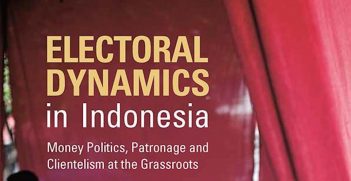Food Security in Asia: Challenges, Policies and Implications

The spike in global food prices in 2007-2008 caused panic among consumers and governments in developing countries dependent on imported food. Prices have since declined as expected. But the crisis revealed to political leaders that the world faced a potentially daunting long-term food security challenge, a challenge that if not met would not only diminish welfare in the poorest countries but also increase risks of armed conflict between and within states. The food security challenge is greatest for India and China which appropriately are the focus of Dr Barthwal-Datta’s concise overview, which also deals, though less comprehensively, with food security in Vietnam, Cambodia, the Philippines and Indonesia. She writes with scholarly detachment in clear language that avoids the polemics sometimes associated with what can be an emotional subject.
There is widespread agreement that the main factors influencing the supply and demand for food at the root of the long-term regional and national food security challenge are similar to those that caused the crisis of 2007-08. On the supply side, insufficient investment in agricultural research, development and extension, poorly developed infrastructure, property rights and credit systems, misconceived government policies disruptive of markets, climatic variability and global warming and high energy input costs, while on the demand side rising world population, increased demand for higher-value, more nutritious foods as living standards rise and diversion of food crops to produce biofuels are the main influences.
A wealth of information and data is provided in successive chapters describing how Asia coped with these challenges; how India and China have so far been able to remain largely self-sufficient in food grains even though urban expansion has diminished the availability of farmland, fresh water for irrigation is depleted and polluted and the boost to productivity from the Green Revolution has subsided. Nevertheless, calories consumed per person have declined in India since the 1980s. On the other hand, China has continued to improve consumption and nutritional levels.
Aspects of the political and strategic implications of food security are briefly dealt with, for example, Sino-Indian tensions over river waters. China plans to divert water from rivers originating in the Tibetan plateau which would have a devastating impact on both India and Bangladesh. The strategic importance of China’s dependence on ocean fishing as a source of protein is described. Competing claims in the South China Sea are about fish resources as well as oil and gas.
If domestic production is to substantially meet the food needs of Asia’s growing population, agricultural productivity must increase. That will require more intensive farming and increased output per farm worker. Dr Barthwal-Datta, in considering how that goal can be achieved, places appropriate emphasis on social and equity issues especially as they affect the poorest farmers. The author stresses the importance of good governance in pursuit of a ‘holistic approach….rather than ad hoc plans focussed narrowly on raising production, which have largely driven food security and agricultural policies in Asia in recent decades’. However, from the perspective of the natural scientist, she may underestimate biological and related obstacles to increasing global food production by 70% if the projected 2050 world population of nine billion is to be adequately fed. For example, genetic modification gets little more than a critical passing reference.
Dr Monika Barthwal-Dutta, Food Security in Asia: Challenges, Policies and Implications, The Adelphi Series, Volume 2013, Edition No. 441-442, February 2014.
Reviewed by James Ingram AO FAIIA, Former Diplomat and Head of the UN World Food Program





